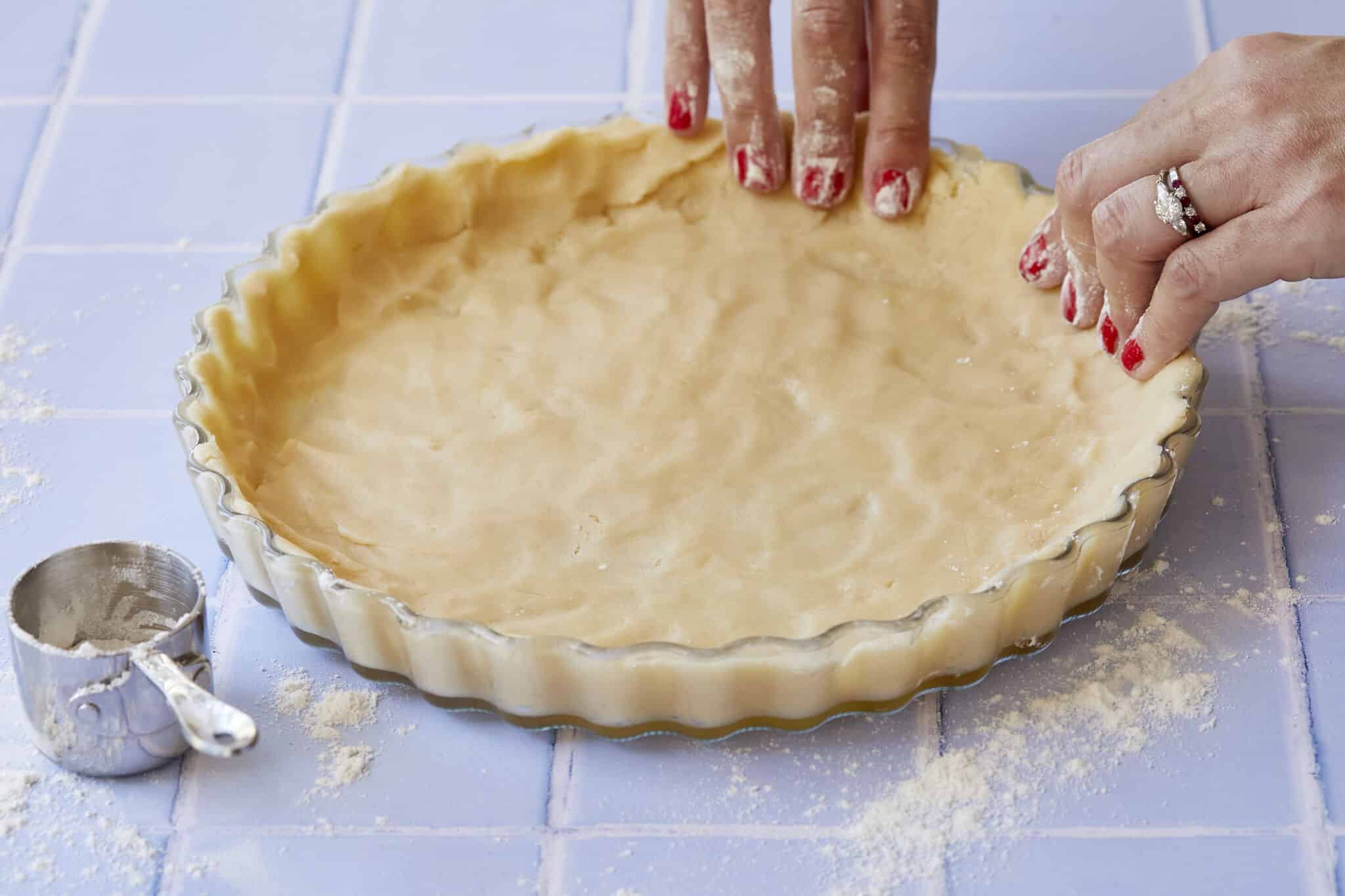
This post may contain affiliate links. Please see my full disclosure for details.
Hi Bold Bakers!
WHY YOU WILL LOVE THIS RECIPE My Pâte Sucrée is incredibly buttery, perfectly crumbly, lightly sweet and takes only a few simple ingredients and up to 15 minutes to make!
As a professionally-trained chef, baker and the proud creator of Bigger Bolder Baking, I’ve made and eaten fair shares of pies and tarts. And as you may know, I love crusts! However, from my crumbly Cookie Curst to my flaky Pie Crust, nothing is like this one that can blind bake into a hard shell to hold juicy or gooey fillings without turning soggy, but still stays tender and melts in your mouth just like my shortbread cookies!
Let’s get baking!
Table of Contents
- What is Pâte Sucrée?
- Tools You Need for my Pâte Sucrée Recipe
- Pâte Sucrée Recipe Ingredients
- How to Make Pâte Sucrée
- How to Store a Pâte Sucrée?
- How to Blind Bake a Pârte?
- FAQs
- Gemma’s Pro Chef Tips
- Try Pâte Sucrée in These Tart Recipes
What is Pâte Sucrée?
“Pâte Sucrée” is a French sweet enriched shortcrust pastry that’s originally for baking fruit tarts now widely used for pies, tarts, quiche, or British flan.
- The term “Pâte Sucrée” pronounces like “paht s’ew/khay” and means “sweet dough” in French.
- Pâte Sucrée is buttery, lightly sweet and not overwhelming, perfectly crumbly but still tender to melt in your mouth.
- The “short” part means the crust falls apart easily into small pieces. The reason is that “shortcrust” has a high fat content using roughly twice as much flour as fat in weight and does not use water to form gluten strands yielding to a crumbly texture.
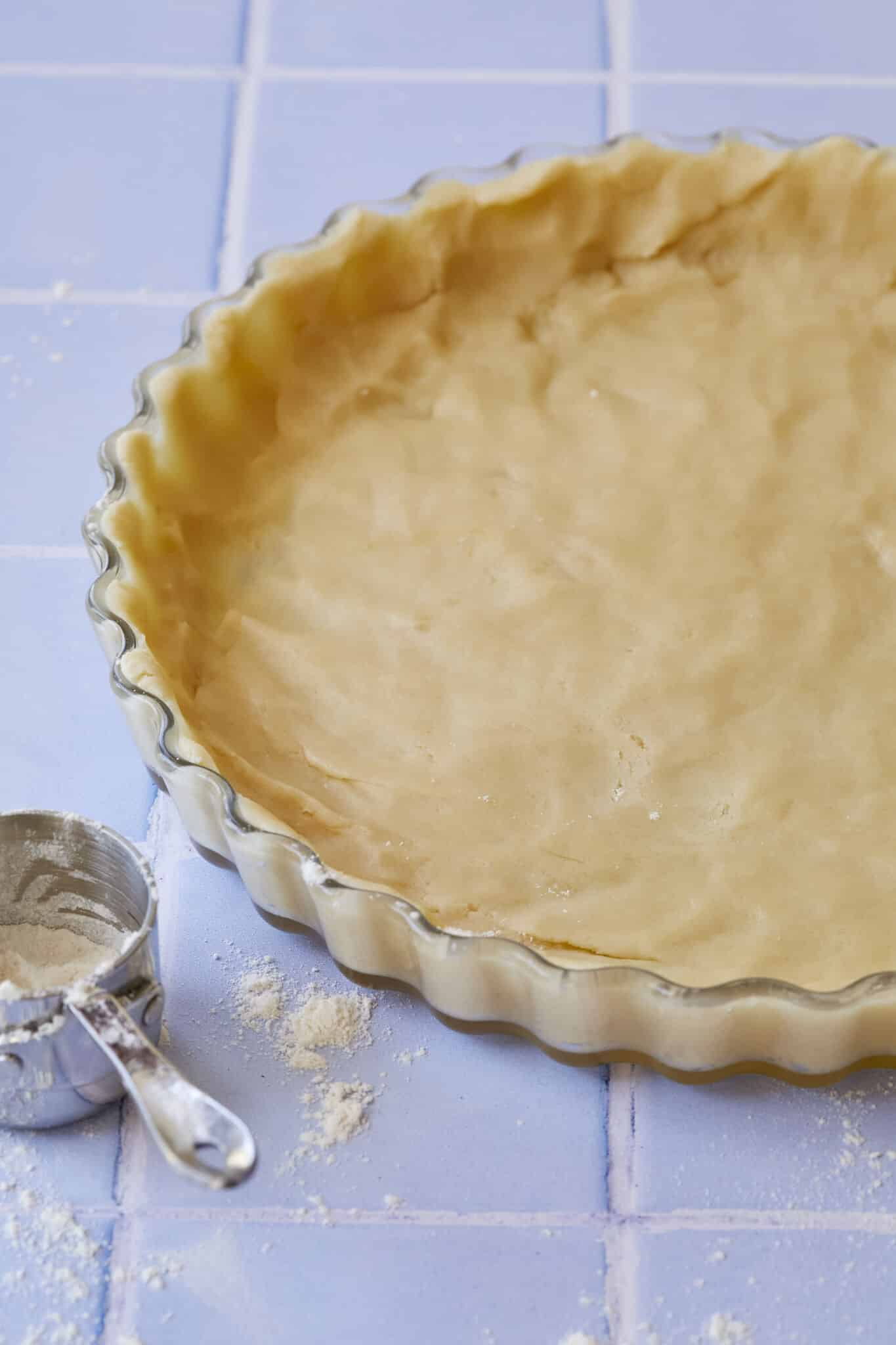
Tools You Need for my Pâte Sucrée Recipe
- Measuring cups and measuring spoons
- Stand mixer or hand handled electric mixer
- Mixing bowl
- Spatula
- 9-inch tart pan
- Rolling pin (optional, when dough is chilled)
Pâte Sucrée Recipe Ingredients
-
Butter
- Butter is around 80% milk fat and 20% water. Hence butter provides a high percentage of fat and a low percentage of water to form a crumbly texture instead of chewy gluten.
- Butter also deeply enriches the flavor of Pâte Sucrée.
-
Granulated sugar
- Granulated sugar sweetens the pastry to a point that’s not overwhelming.
- Granulated sugar aerates the pastry by incorporating air and retaining air. When sugar is beaten with butter, it dissolves in the film on the surface of the air bubbles. This sugary syrup film prevents the bubbles from drying out and tightening up too fast.
-
Egg yolks
- Egg yolks bind ingredients. Because egg yolks are one type of surfactant and contain an emulsifier called lecithin which can lower the surface tension between fat and water. As a result, this averages the two densities to bring the two together into a homogenous mixture at the same density. “Whisking” is the centripetal force to make this happen.
- Egg yolks enrich the flavor.
-
Heavy cream
- Heavy cream provides moisture to prevent this Pâte Scurée pastry from getting tough.
- Heavy cream enriches the flavor with high-fat content.
- You can also use canned coconut milk instead.
-
All-purpose flour
- All-purpose flour provides a base for this shortcrust pastry crust.
- All-purpose flour has protein content around 9-11% which is perfect for forming the needed amount of gluten to hold shape and handle moisture without being chewy.
How to Make Pâte Sucrée
-
Creaming butter and sugar:
-
Make sure your butter is softened correctly: when you push the butter and it makes an indent, but your finger doesn’t easily squish right through.
-
Cream butter, sugar and salt together on high speed until light and creamy, about 3 minutes. This will build a steady and pliable structure to hold other ingredients. Otherwise your pastry can be brittle and hard to handle.
-
-
Emulsifying:
-
Add the egg yolks, one at a time, followed by the cream, and beat until blended. This will build a homogenous mixture without oily results.
-
Scrape down the sides of the bowl to ensure even mixing.
-
-
Adding flour:
- Add the flour and mix just until combined and forms a ball.
- This will form a perfect pliable and tender gluten network for Pâte Sucrée.
-
Shaping:
-
Press the soft dough directly into a tart pan with your fingers or flatten into a disc, wrap well and refrigerate until ready to use.
-
If the dough is chilled, rolling out is the best method. Trim away any excess dough and reserve for possible cracks.
-
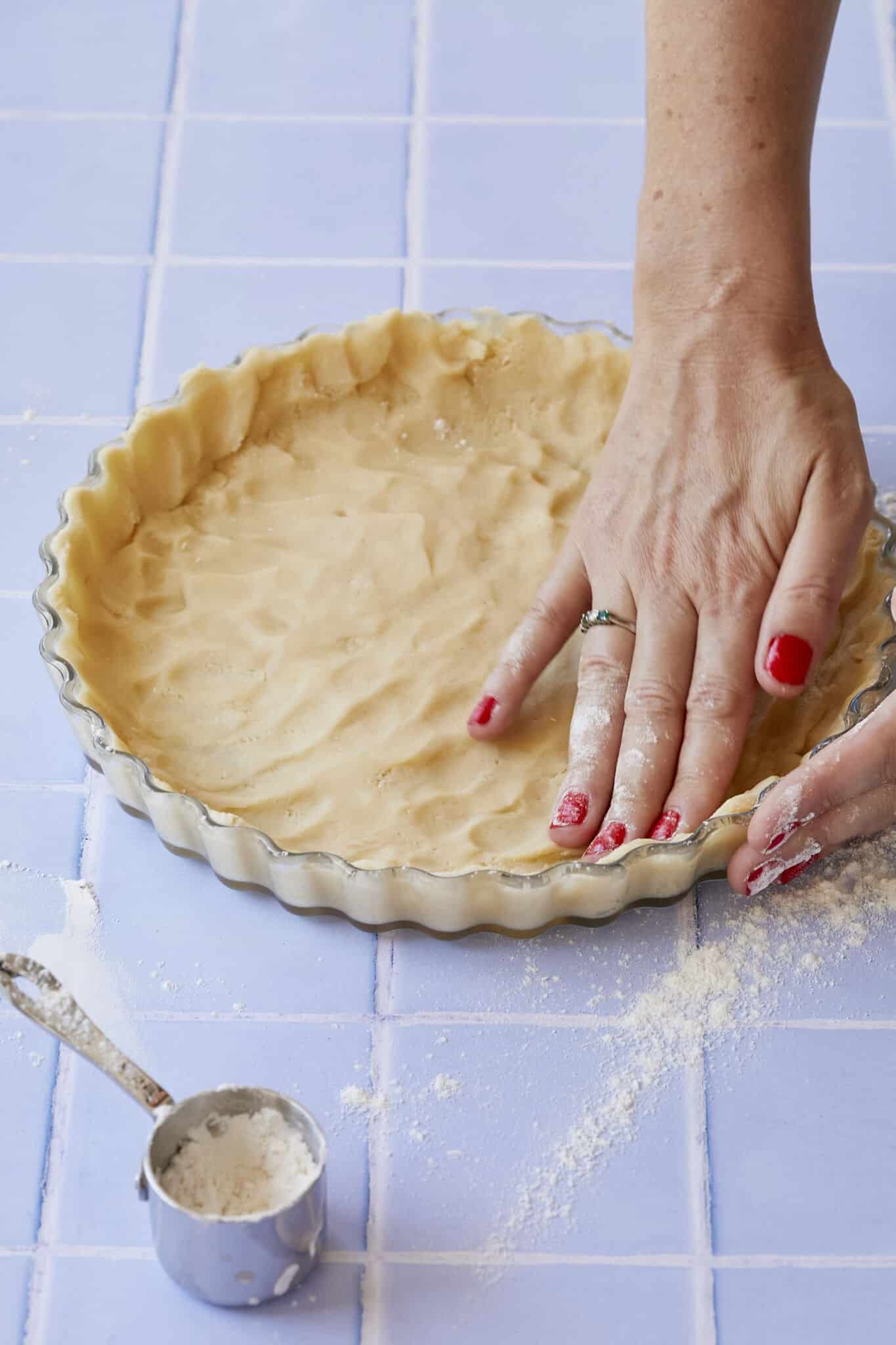
What Is The Difference Between Pâte Sucrée And Pâte Brisée?
Pâte Sucrée and Pate Brisée are both French pastry crusts used to make tarts and pies. While they have similar appearances, several differences in their uses, ingredients, taste, and textures set them apart:
-
Definitions & nature:
- Pâte Sucrée (Pronounced: paht s’ew/kray): Pâte Sucrée is a sweet French shortcrust pastry used to make tart crusts.
- Pâte brisée (Pronounced: paht bree/zay): Pate Brisée is a savory French pastry dough used to make pies, quiches, and tarts.
-
Techniques:
- Pâte Sucrée uses SOFTENED (room temperature) butter to cream with sugar until light and fluffy. The extra creaming process incorporates in air to aerate the crumbly crust to make it tender at the same time.
- Pâte brisée uses COLD butter like most other crusts do. These types of crusts rely on water content in COLD butter butter to evaporate and expand to make the crust rise but no so much as the creaming butter and sugar method does.
-
Taste:
- Pâte Sucrée is sweeter from the extra amount of sugar. Comparatively,
- Pâte Brisée is on the savory side.
-
Texture (water & fat content):
- Pâte Sucrée contains NO water and has a lower butter to flour ratio which means containing more flour and less butter, which makes Pâte Sucrée is more like shortbread cookies. Comparatively,
- Pâte Brisée contains WATER and has a higher butter to flour ratio, which forms more gluten to make it more like a flaky pie dough.
How to Store a Pâte Sucrée (French Sweet Shortcrust Pastry)?
Pate sucree can be made, wrapped and frozen for up to 8 weeks. Defrost in the fridge overnight and use as recipe directs. Try this out with your favorite Pies & Tarts recipes!
How to Blind Bake a Pâte Sucrée pastry?
Follow detailed instructions and pro tips in my article How To Blind Bake A Pie Crust, you’ll enjoy your Pâte Sucrée.
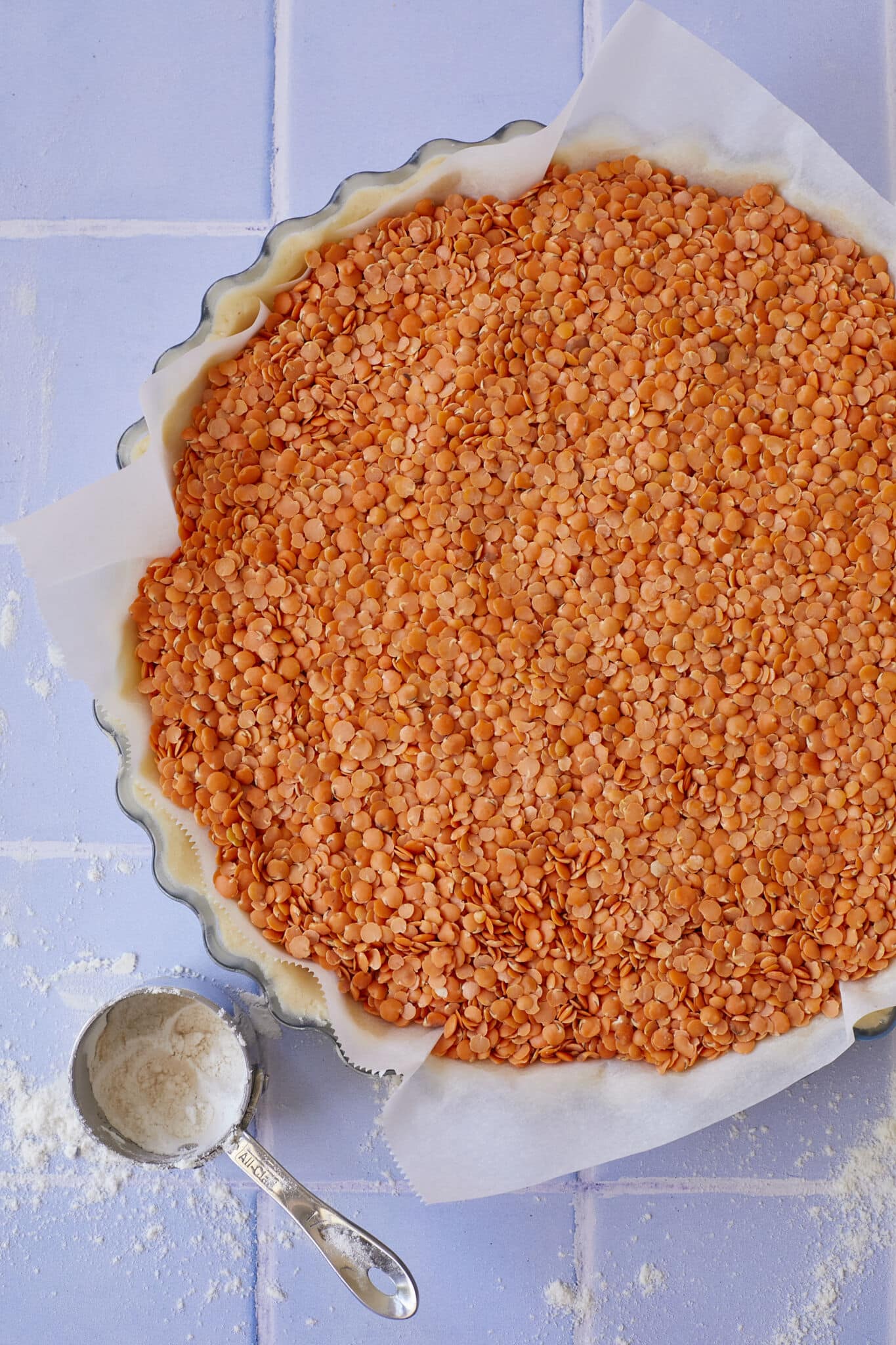
FAQs
Why does Pâte Sucrée use softened butter instead of cold butter?
Although for most crusts cold butter is used, the mixing method for this crust will use softened butter and the creaming method, which creates a tender, cookie-like crust texture instead of a flaky crust.
How do I make Pâte Sucrée less sweet?
For a less sweet crust, you can reduce the sugar down to 1 tablespoon, but you will lose some of the tenderness. Because less sugar means less air and less lightness.
Gemma’s Pro Chef Tips
- For a firmer crust, replace the egg yolks and cream with 1 whole large egg.
- For a quick tart, blind bake this crust, fill with Simple Pastry Cream or Lemon Curd and sliced fresh fruit or berries.
- This crust freezes well, so to save time in the future, make several crusts and freeze the extra.
- best to use an electric hand mixer of stand mixer to make this pastry to ensure proper creaming
- You can use your fingers to press this pastry into a pie pan or you can chill it and roll it.
- This will make Pâte Scurée less prone to tearing
- and will put less tension to ensure its tenderness.
Try Pâte Sucrée in These Tart Recipes:
Pâte Sucrée Recipe (French Sweet Shortcrust Pastry)
Ingredients
- ½ cup (4 oz/115 g) butter, softened
- ¼ cup (2 oz/57 g) granulated sugar
- ½ teaspoon salt
- 2 large egg yolks
- 1 tablespoon heavy cream
- 1½ cups (7½ oz/213 g) all-purpose flour
Instructions
- In the bowl of a stand mixer or with a handheld electric mixer, cream the butter, sugar, and salt together on high speed until light and creamy, about 3 minutes.
- Add the egg yolks, one at a time, followed by the cream, and beat until blended. Scrape down the sides of the bowl to ensure even mixing.
- Add the flour and mix just until combined and forms a ball.
- Press the soft dough directly into a tart pan with your fingers or flatten into a disc, wrap well and refrigerate until ready to use. If the dough is chilled, rolling out is the best method.
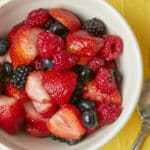
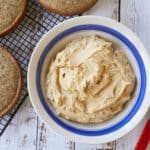
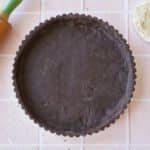
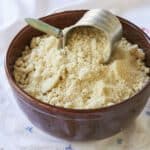
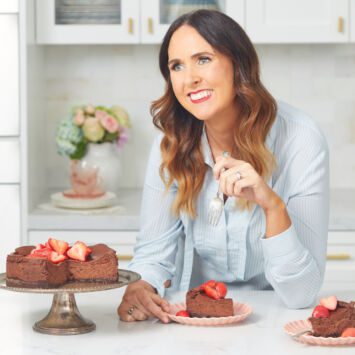


I have a strawberry pie recipe that uses a Bisquick crust. It’s hard to spread in the pan and sticks to the bottom after pre-baking. Do you think this would make a better crust?